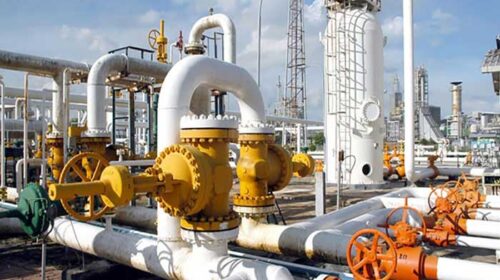The oil sector has been hogging the investment limelight after a spectacular recovery that has set the sector as one of the top performers in 2021. However, it’s natural gas bulls who have been having a real ball with natural gas trading at their highest levels since 2014, outpacing oil and many other commodities.
The natural gas sector is off to another good start, with natural gas prices (Henry Hub) up 20% to $4.19/MMBtu since the beginning of the year, thanks to robust demand.
Natural gas prices have popped nearly 10% over the past few days after updated weather forecasts called for freezing temps in the northeast for the duration of January. The forecast comes on the back of winter storms hitting the east coast over the weekend, driving Algonquin city-gate nat gas prices as high as $24/MMBtu. Many New England states have turned to burning oil to keep grids operational through inclement weather due to their limited access to domestic gas supplies.
“The heating demand outlook for [the] eastern-third of the U.S. has strengthened materially for this weekend and for the last week of January,” Again Capital’s John Kilduff has said.
Last week, the U.S. Energy Information Administration (EIA) on Thursday reported a pull of 179 Bcf natural gas from underground inventories for the week ended Jan. 7, the largest inventory draw so far this winter.
Low temperatures and high natural gas prices are a boon to majors like Royal Dutch Shell (NYSE:RDS.A) and BP Plc. (NYSE:BP), who produce liquified natural gas in Trinidad and sell into the New England market. Meanwhile, Domestic natural gas producer AnteroCorp. (NYSE:AR) was recently upgraded to buy at BMO, as discounted valuation and rising natural gas prices are expected to drive shares 50% higher, while Chesapeake (NASDAQ:CHK) was recently initiated buy at BAML, with ~30% upside.
Wood Mackenzie has released its Global gas and LNG 2022 report. Here are some of its interesting predictions.
1. Prices to fall if Nord Stream 2 is commissioned A severe shortage of natural gas, declining wind power output, nuclear outages, and cold weather have conspired to hand Europe one of its worst energy crises on record. Yet, Europe’s energy woes keep getting worse at every turn.
European natural gas prices hit a new record high on Tuesday after a pipeline that brings Russian gas to Germany switched flows to the east while U.S. ships carrying liquefied natural gas (LNG) destined for the European market are diverting to Asia, where prices are even higher.
Westward gas flows through the 2,607 mile-long Yamal-Europe pipeline, one of the major routes for Russian gas to Europe, have been gradually falling since but have lately reversed direction, a move the Kremlin says has no political implications.
Related: A Copper Crisis Threatens The Energy Transition
Some western politicians contend that Russia is using its natural gas as a weapon in the political tussle tied to Ukraine, as well as delays in the certification of another controversial pipeline, Nord Stream 2. Russia, of course, has denied any connection.
“There is absolutely no connection (to Nord Stream 2), this is a purely commercial situation,” Kremlin spokesman Dmitry Peskov told a conference call on Tuesday.
The Nord Stream project aims to establish a reliable supply of Russian natural gas to central Europe. To do this, the Gazprom-owned Nord Stream company would connect Russia to Germany via pipelines running through the Baltic Sea. Several EU nations have objected to the pipeline, seeing it as against the organization’s interests.
Woodmac says that at current levels of Russian exports and considering normal weather conditions, European storage inventories will fall below 15 billion cubic meters (bcm) by the end of March, a record low. Prices will eventually come down as the winter is through, but requirements to refill storage facilities will be high, some 20-25 bcm more than last year. The commissioning of Nord Stream 2 might well be the only option to refill storage and avoid a repeat of last year’s winter crisis.
“Normal winter weather, including in Asia, and visibility on Nord Stream 2 commissioning would push prices down, although demand for storage (and high carbon prices) will maintain prices above US$15 per metric million British thermal units (mmbtu). But a cold winter in Europe and Asia, alongside continued uncertainty about commissioning of Nord Stream 2, could see prices increase further throughout 2022 – get ready for another bumpy year ahead.”
2. Global gas demand will remain resilient
Woodmac says natural gas demand is likely to remain resilient in the short term, with signs of demand destruction limited so far.
LNG demand in Asia has continued to increase as most supply is priced at legacy oil-indexed contracts, currently trading at half the value of Asian LNG spot prices. The prospects are less bright in the European market with gas demand in industry and power down 4% since the summer, compared to the past five years.





